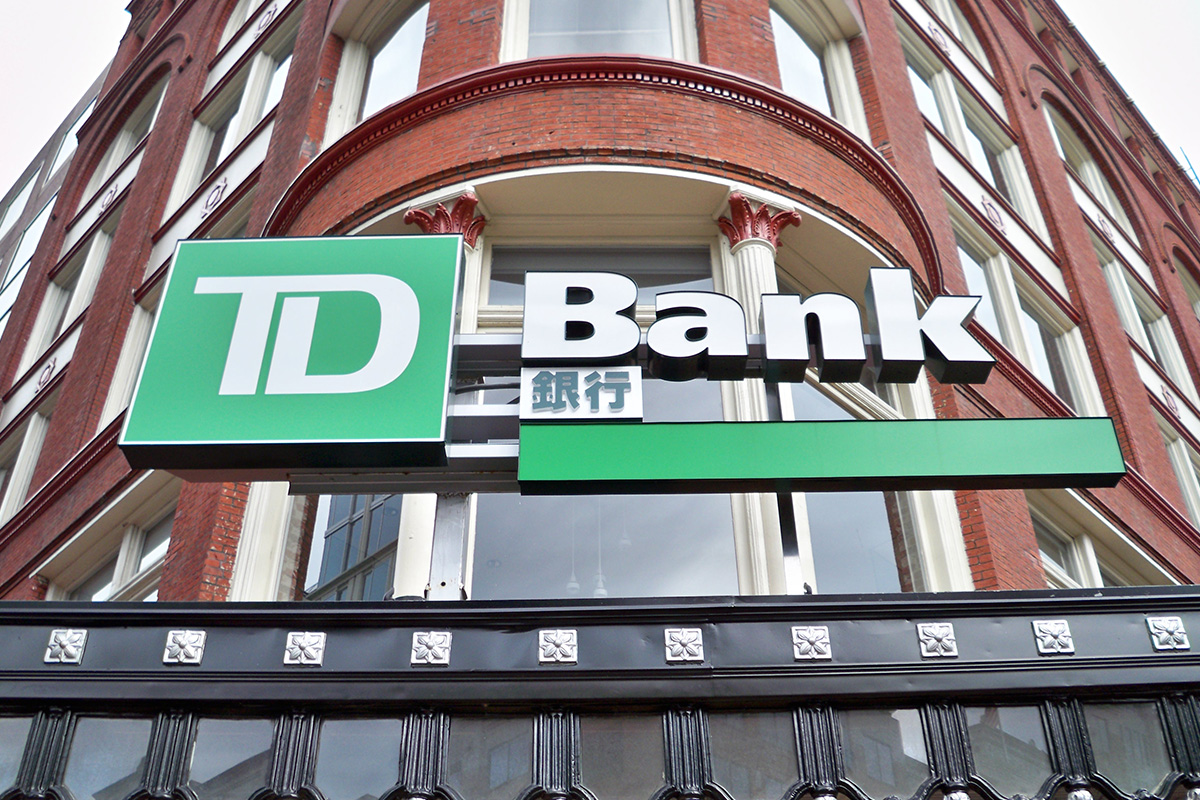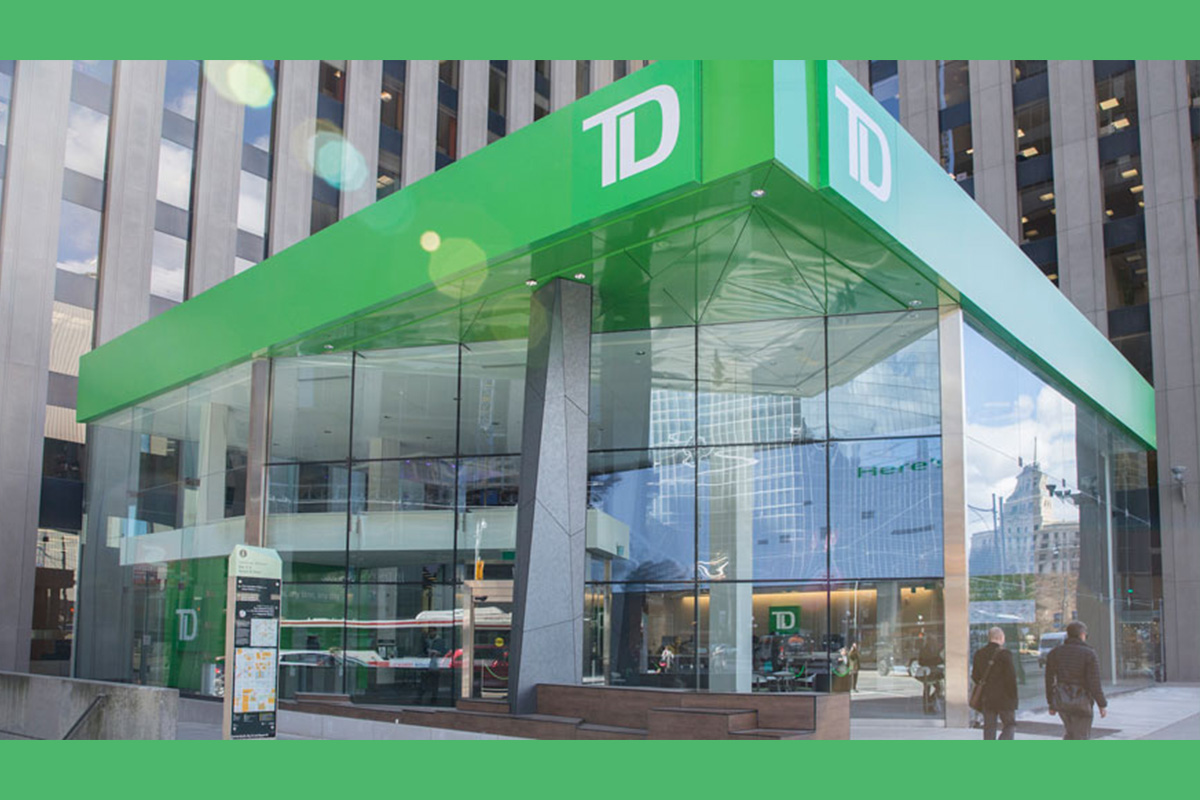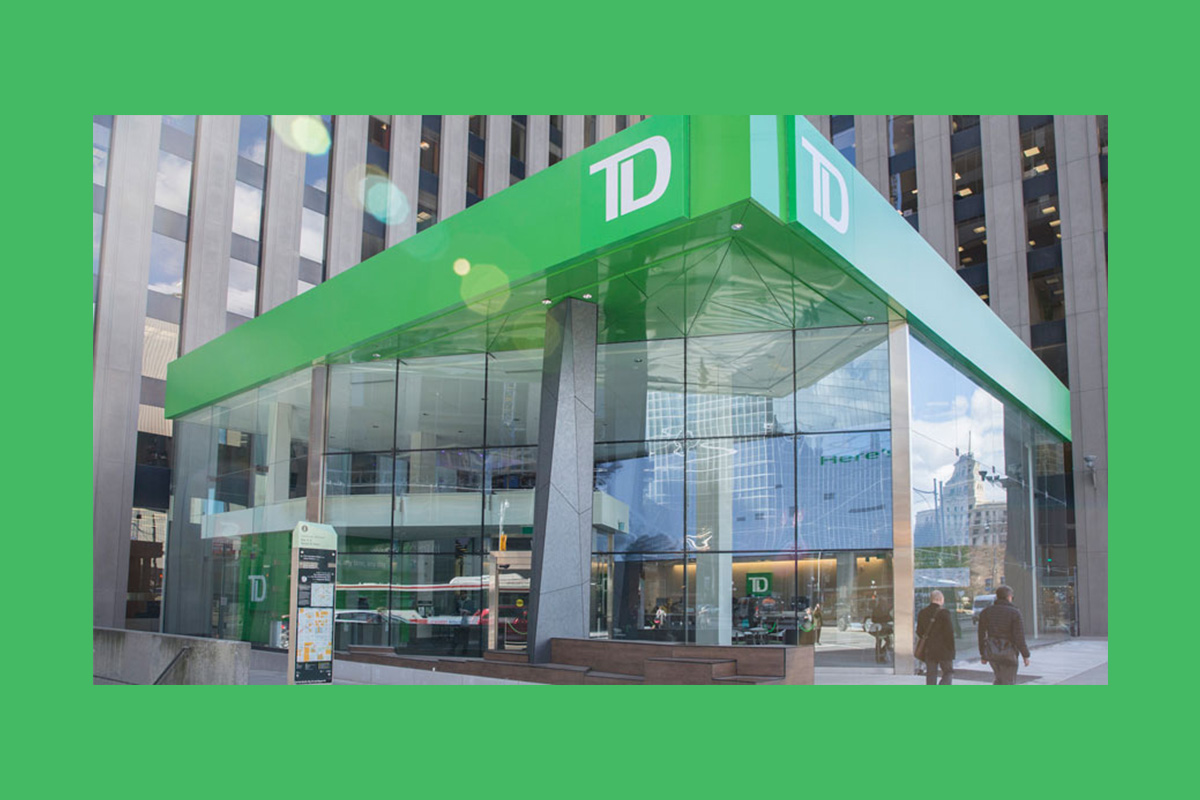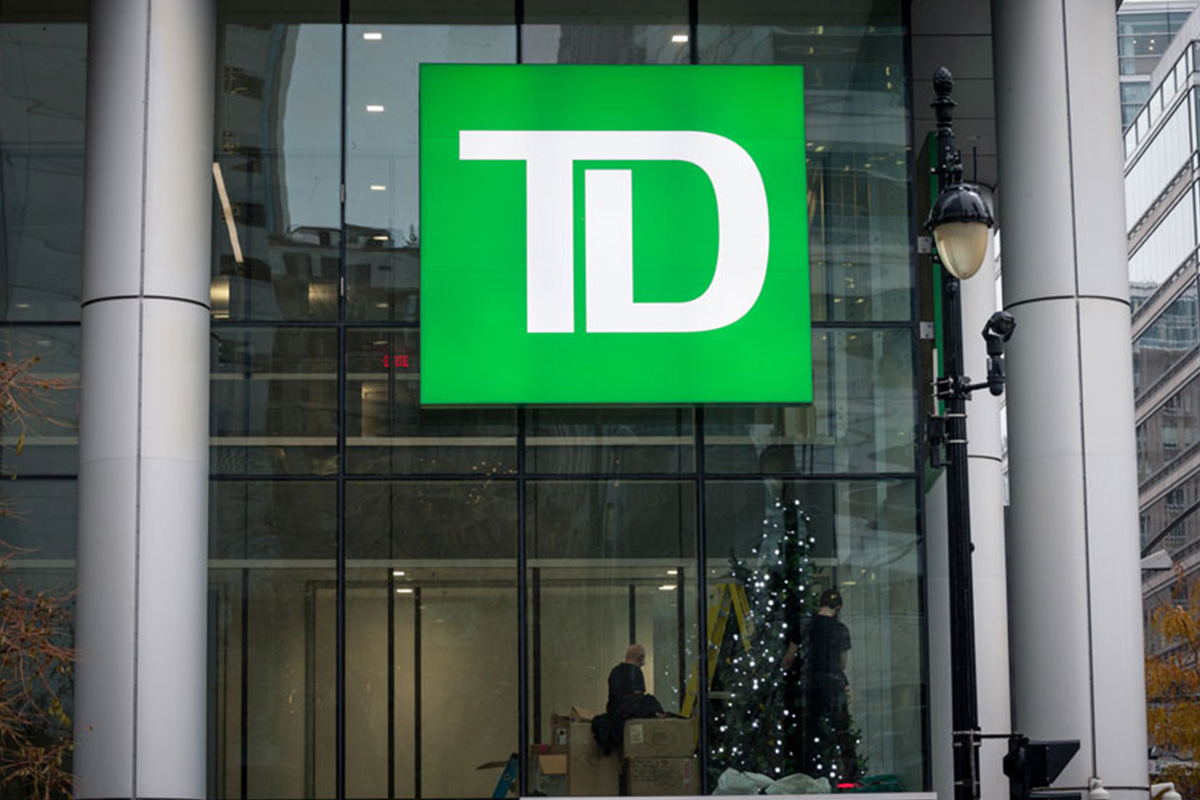TD Bank Group (the “Bank”) announced today that it expects The Charles Schwab Corporation’s (“Schwab”) fourth quarter earnings to translate into approximately CDN $285 million of reported equity in net income of an investment in Schwab for the Bank’s fiscal 2023 first quarter. Excluding acquisition-related charges of approximately CDN $13 million after-tax and amortization of acquired intangibles of approximately CDN $30 million after-tax, adjusted equity in net income of an investment in Schwab will be approximately CDN $328 million.
TD Bank Group will release its first quarter financial results and host an earnings conference call on March 2, 2023. Conference call and audio webcast details will be announced closer to that date.
Caution Regarding Use of Non-GAAP Information
The Bank’s financial results are prepared in accordance with International Financial Reporting Standards (IFRS), the current generally accepted accounting principles (GAAP). The Bank refers to results prepared in accordance with IFRS as “reported” results. The Bank also utilizes non-GAAP financial measures referred to as “adjusted” results to assess each of its businesses and to measure overall Bank performance. To arrive at adjusted results, the Bank removes “items of note”, from reported results. The items of note relate to items which management does not believe are indicative of underlying business performance. The Bank believes that adjusted results provide the reader with a better understanding of how management views the Bank’s performance. As explained, adjusted results are different from reported results determined in accordance with IFRS. Adjusted results, items of note, and related terms used herein are not defined terms under IFRS and, therefore, may not be comparable to similar terms used by other issuers. Please refer to the “Financial Results Overview – How the Bank Reports” section of the Bank’s 2021 Management’s Discussion and Analysis (MD&A), as may be updated in subsequently filed quarterly reports to shareholders, for a reconciliation between the Bank’s reported and adjusted results.
Caution Regarding Forward-Looking Statements
From time to time, the Bank (as defined in this document) makes written and/or oral forward-looking statements, including in this document, in other filings with Canadian regulators or the United States (U.S.) Securities and Exchange Commission (SEC), and in other communications. In addition, representatives of the Bank may make forward-looking statements orally to analysts, investors, the media and others. All such statements are made pursuant to the “safe harbour” provisions of, and are intended to be forward-looking statements under, applicable Canadian and U.S. securities legislation, including the U.S. Private Securities Litigation Reform Act of 1995. Forward-looking statements include, but are not limited to, statements made in this document, the Management’s Discussion and Analysis (“2021 MD&A”) in the Bank’s 2021 Annual Report under the headings “Economic Summary and Outlook” and “The Bank’s Response to COVID-19”, under the headings “Key Priorities for 2022” and “Operating Environment and Outlook” for the Canadian Retail, U.S. Retail, and Wholesale Banking segments, and under the heading “Focus for 2022” for the Corporate segment, and in other statements regarding the Bank’s objectives and priorities for 2022 and beyond and strategies to achieve them, the regulatory environment in which the Bank operates, the Bank’s anticipated financial performance, and the potential economic, financial and other impacts of the Coronavirus Disease 2019 (COVID-19). Forward-looking statements are typically identified by words such as “will”, “would”, “should”, “believe”, “expect”, “anticipate”, “intend”, “estimate”, “plan”, “goal”, “target”, “may”, and “could”.
By their very nature, these forward-looking statements require the Bank to make assumptions and are subject to inherent risks and uncertainties, general and specific. Especially in light of the uncertainty related to the physical, financial, economic, political, and regulatory environments, such risks and uncertainties – many of which are beyond the Bank’s control and the effects of which can be difficult to predict – may cause actual results to differ materially from the expectations expressed in the forward-looking statements. Risk factors that could cause, individually or in the aggregate, such differences include: strategic, credit, market (including equity, commodity, foreign exchange, interest rate, and credit spreads), operational (including technology, cyber security, and infrastructure), model, insurance, liquidity, capital adequacy, legal, regulatory compliance and conduct, reputational, environmental and social, and other risks. Examples of such risk factors include the economic, financial, and other impacts of pandemics, including the COVID-19 pandemic; general business and economic conditions in the regions in which the Bank operates; geopolitical risk; the ability of the Bank to execute on long-term strategies and shorter-term key strategic priorities, including the successful completion of acquisitions and dispositions, business retention plans, and strategic plans; technology and cyber security risk (including cyber-attacks or data security breaches) on the Bank’s information technology, internet, network access or other voice or data communications systems or services; model risk; fraud activity; the failure of third parties to comply with their obligations to the Bank or its affiliates, including relating to the care and control of information, and other risks arising from the Bank’s use of third-party service providers; the impact of new and changes to, or application of, current laws and regulations, including without limitation tax laws, capital guidelines and liquidity regulatory guidance and the bank recapitalization “bail-in” regime; regulatory oversight and compliance risk; increased competition from incumbents and new entrants (including Fintechs and big technology competitors); shifts in consumer attitudes and disruptive technology; exposure related to significant litigation and regulatory matters; ability of the Bank to attract, develop, and retain key talent; changes to the Bank’s credit ratings; changes in currency and interest rates (including the possibility of negative interest rates); increased funding costs and market volatility due to market illiquidity and competition for funding; Interbank Offered Rate (IBOR) transition risk; critical accounting estimates and changes to accounting standards, policies, and methods used by the Bank; existing and potential international debt crises; environmental and social risk (including climate change); and the occurrence of natural and unnatural catastrophic events and claims resulting from such events. The Bank cautions that the preceding list is not exhaustive of all possible risk factors and other factors could also adversely affect the Bank’s results. For more detailed information, please refer to the “Risk Factors and Management” section of the 2021 MD&A, as may be updated in subsequently filed quarterly reports to shareholders and news releases (as applicable) related to any events or transactions discussed under the heading “Significant Acquisitions” or “Significant and Subsequent Events and Pending Acquisitions” in the relevant MD&A, which applicable releases may be found on www.td.com. All such factors, as well as other uncertainties and potential events, and the inherent uncertainty of forward-looking statements, should be considered carefully when making decisions with respect to the Bank. The Bank cautions readers not to place undue reliance on the Bank’s forward-looking statements.
Material economic assumptions underlying the forward-looking statements contained in this document are set out in the 2021 MD&A under the headings “Economic Summary and Outlook” and “The Bank’s Response to COVID-19”, under the headings “Key Priorities for 2022” and “Operating Environment and Outlook” for the Canadian Retail, U.S. Retail, and Wholesale Banking segments, and under the heading “Focus for 2022” for the Corporate segment, each as may be updated in subsequently filed quarterly reports to shareholders.
Any forward-looking statements contained in this document represent the views of management only as of the date hereof and are presented for the purpose of assisting the Bank’s shareholders and analysts in understanding the Bank’s financial position, objectives and priorities and anticipated financial performance as at and for the periods ended on the dates presented, and may not be appropriate for other purposes. The Bank does not undertake to update any forward-looking statements, whether written or oral, that may be made from time to time by or on its behalf, except as required under applicable securities legislation.







